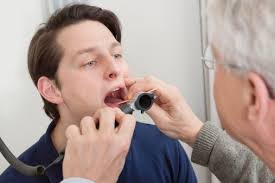Introduction : It is a procedure that allows us to look at your larynx (voice box) and the surrounding area. Indications : It provides more information about your voice box than can be gathered in the clinic. It may also incorporate treatment of certain conditions. If your voice is hoarse, the procedure enables your doctor to find out why. He/she may treat it there and then - for example, if you were found to have nodules on your vocal cords. The doctor can check if you have a growth on your larynx; and if so, assess its extent and take biopsies so that treatment can be planned. If your doctor is concerned that you may have a growth on the voice box, then it is advisable that you go ahead with the procedure, as early diagnosis of cancer in this area is leads to a much better chanceof cure. There is no good alternative to taking biopsy tissue to be sure what type of growth is present - which determines what the best treatment is. Technique : You will be asleep under general anaesthesia. A metal telescope is inserted into your mouth and down the throat until the doctor can see your larynx. A microscope is then used toget a better view through the telescope. Because the telescope is metal and passes over your teeth, there is a small risk that a tooth may be damaged during theprocedure. If you have any caps, crowns or loose teeth please let your doctor know before the procedure. Sometimes a laser is used to treat conditions through the telescope. Your doctor will normally discuss this with you if it islikely to be used in your case. Microlaryngoscopy takes about half an hour, depending on the reason it is being done. Stay in hospital :You will go home on the day of your operation, as long as the operation is straightforward and we think that your general state of health and home circumstances are suitable. Postoperative Care : Most patients feel their throat is sore after this procedure. This usually only lasts a couple of days. Simple painkillers such as paracetamol are normally enough, along with drinking plenty of fluids. Sometimes steam inhalations are helpful. This depends on what you have had done. You will need atleast 48 hours off work to recover from the anaesthetic, and during this time you should not drive or operate machinery. You may have to rest your voice for anything from two days to one week, which may affect when you can return to work. It is best to ask your doctor when you are in the clinic what they recommend so that you can make arrangements. If you have been advised to rest your voice, you should make sure you have a pen and paper to hand at all times, so you can communicate with family or friends. If a situation arises where you have to speak, it is better to use a normal voice rather than a whisper.
It is a procedure that allows us to look at your larynx (voice box) and the surrounding area.
General anaesthesia.
Half an hour.
Strict voice rest and painkillers for throat pain.



